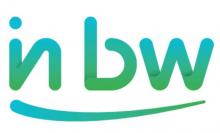The client
InBW mainly has 3 important missions in the province of Walloon Brabant: economic and territorial development, waste cycle management and water cycle management. For this last activity, InBW is particularly involved in the production, treatment and management of water quality, but also in the distribution and maintenance of the network.


The challenges
InBW does no less than 25,000 interventions per year on the water distribution network: maintenance, new connections or modifications, readings, replacement of meters, disturbances, etc.
Logistically, orchestrating such a large number of interventions is not an easy task. Each intervention is linked to an execution sheet, which includes a certain number of elements such as index readings, the kilometres travelled by the technician or the parts used during the intervention. These sheets then go through at least 6 different participants to ensure, in particular, the monitoring of worksites, the renewal of stocks or the updating of descriptive data.
To date, these sheets are created in the ERP system and completed manually. This situation creates two main problems:
- This manual process requires a lot of energy from the teams
- It is a source of errors at each stage, generating delays in the verification and encoding circuit.
The challenge for InBW is therefore to fully digitise the process of encoding the execution sheets and to link them to its ERP system in order to send the appropriate information to each department.
The approach
InBW's digital transformation project is being carried out in two phases:
- An in-depth analysis of the needs and functionalities required, the creation of wireframes and the implementation of ergonomic tests, leading to precise specifications.
- The development of a web & mobile application that allows the handling of the execution sheets on a tablet and that is synchronised with the ERP in real time.

The solution
At this stage, Contraste Digital and InBW were able to finalise the first part. Our teams of e-business, UX, UI and web design consultants proceeded methodically:
- Setting up interviews and workshops in order to define the required functionalities according to the needs of each department.
- Creation of a mock-up of the application and ergonomic tests with the various users
- Analysis of the constraints and technical requirements of web & mobile applications
To implement a business application of this scale, Contraste Digital considers it essential to carry out such a prior analysis. Not only does it provide a high level of security for the development, but also offers the advantage of :
- Ensuring that the business objectives are met
- Keep a clear and global vision of the solution to be developed
- Delivering an optimal user experience
- Save considerable time during development
The results
The first phase of the project was successfully completed, enabling InBW to draw up precise specifications that will guide the development of its future application.
The complementary profiles involved in the analysis - architect, business analyst, UX designer - followed a methodology that will lead to the subsequent development of an efficient solution that will be adopted by the users.
In general, this analysis stage is often neglected, resulting in a lack of vision on the project, poor organisation during development, or worse, sometimes leading to a solution that does not really meet the expectations of the various users.
